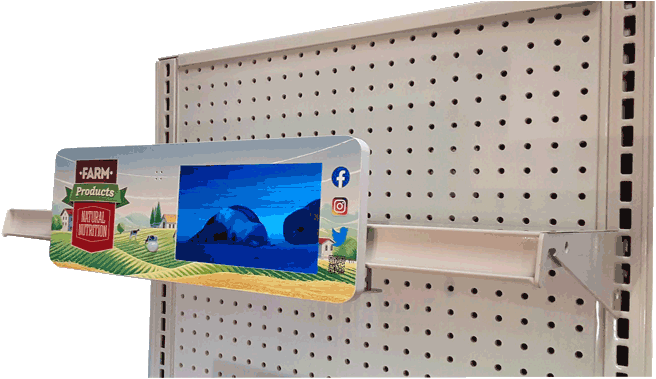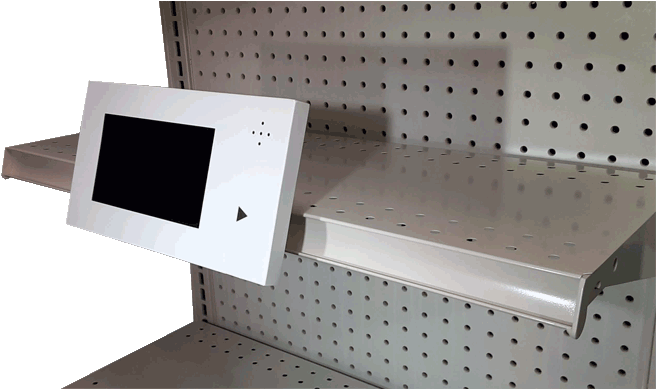Promotional Displays: An In-Depth Guide
Promotional Displays: An In-Depth Guide
Promotional Displays: An In-Depth Guide
Introduction
Promotional displays play a crucial role in marketing for businesses aiming to showcase their offerings, captivate customers, and boost sales. In the highly competitive marketplace, crafting an attention-grabbing and informative promotional display is key to achieving success. In this article, we will delve into various promotional display types, their significance, design principles, and tips for creating effective displays. So, let's get started!
Promotional Display Varieties
Point-of-Purchase (POP) Displays
POP displays are positioned near or at the point of sale, drawing customers' attention when they are most likely to make a purchase. These displays typically feature special deals, new products, or bestsellers and come in multiple forms, such as end-cap displays, shelf talkers, and floor stands.
Window Displays
Retail marketing relies heavily on window displays to attract foot traffic and persuade potential customers to enter a store. They often showcase new collections, seasonal items, or best-selling products and are designed to be visually appealing and inventive to capture attention.
Trade Show Displays
Businesses utilize promotional displays at trade shows and exhibitions to showcase their products and services to prospective clients and partners. These displays can range from basic tabletop setups to complex booth designs incorporating banners, backdrops, and multimedia presentations.
Interactive Displays
Interactive displays engage customers by inviting them to interact with the display, whether through touch screens, product demonstrations, or gamified experiences. These displays excel at capturing attention, providing information, and crafting unforgettable brand experiences.
The Significance of Promotional Displays
Promotional displays serve several vital purposes in marketing:
- Attracting attention: A striking display can lure potential customers to your products or services, increasing the likelihood of a purchase.
- Communicating information: Displays can inform customers about your offerings, promotions, or unique selling points, helping them make educated decisions.
- Creating a brand experience: A well-designed display can convey your brand's personality and values, fostering a connection with customers and setting you apart from competitors.
- Driving sales: By promoting special offers or highlighting popular products, promotional displays can directly impact sales and revenue.
Principles for Designing Effective Displays
To create a successful promotional display, consider the following design principles:
Establishing a Visual Hierarchy
Visual hierarchy is essential in guiding the viewer's eyes through the display, emphasizing critical information and creating a sense of organization. To achieve this, prioritize elements based on their importance, and use size, contrast, and positioning to differentiate them.
Leveraging Color Psychology
Color can provoke emotions and influence purchasing decisions. Choose colors that complement your brand identity and appeal to your target audience. Utilize color psychology to create a specific mood, such as using warm colors to evoke excitement or cool colors for a calming effect.
Embracing Simplicity
A cluttered display can be overwhelming and confusing. Aim for simplicity by minimizing the number of elements and focusing on a clear message. This will help viewers quickly understand your offer and make a decision.
Ensuring Brand Consistency
Ensure that your promotional display aligns with your brand's visual identity, messaging, and values. Consistent branding helps build brand recognition and trust, making customers more likely to engage with your display and make a purchase.
Promoting Sustainability in Display Design
As businesses become more environmentally conscious, it is essential to consider sustainability in promotional display design. Here are some tips for creating eco-friendly displays:
- Use sustainable materials: Opt for materials that are recyclable, reusable, or biodegradable, such as cardboard, bamboo, or recycled plastics, to minimize the environmental impact of your display.
- Maximize energy efficiency: Utilize energy-efficient lighting, such as LED lights, and incorporate solar-powered components to reduce energy consumption.
- Implement modular designs: Create modular displays that can be easily reconfigured, updated, or repurposed for various events or promotions, reducing waste and resource usage.
Assessing the Success of Promotional Displays
To measure the success of your promotional display, consider the following key performance indicators (KPIs):
- Foot traffic: Monitor the number of people who approach or interact with your display to gauge its effectiveness in attracting attention.
- Sales lift: Compare sales data before and after implementing the display to determine its impact on revenue.
- Customer engagement: Track how long customers spend interacting with your display and note any feedback they provide.
Integrating Technology into Promotional Displays
Incorporating technology into your promotional displays can enhance their effectiveness and create a more engaging experience for customers. Consider the following ideas:
- Digital signage: Utilize digital screens to display dynamic content, such as product videos, customer reviews, or real-time social media feeds, to engage and inform customers.
- Augmented reality: Integrate augmented reality (AR) experiences, allowing customers to virtually try on products or visualize items in their own space using their smartphones.
- Virtual reality: Offer virtual reality (VR) experiences that transport customers into immersive environments, providing unique brand experiences and showcasing products in new and exciting ways.
Understanding the Role of Accessibility in Promotional Displays
Creating accessible promotional displays ensures that all customers, including those with disabilities, can engage with and benefit from your marketing efforts. Consider these tips for designing accessible displays:
- Provide clear navigation: Ensure that your display is easy to navigate, with clear pathways and signage for all visitors.
- Offer alternative formats: Provide information in multiple formats, such as large print, Braille, or audio descriptions, to accommodate customers with visual impairments.
- Consider color contrast: Use high-contrast color combinations and easily readable fonts to improve visibility for customers with low vision or color blindness.
Strategies to Enhance Promotional Display Success
- Keep it fresh: Regularly update your promotional displays to maintain customer interest and showcase new products or offers.
- Test and refine: Continuously evaluate your display's performance and make adjustments based on data and customer feedback.
- Collaborate with others: Work with designers, marketers, and retail staff to create a cohesive and effective display that meets your goals.
In Summary
Promotional displays are a powerful marketing tool that can captivate attention, convey information, create memorable brand experiences, and boost sales. By understanding the various types of displays, employing effective design principles, and continuously evaluating performance, businesses can create successful promotional displays that set them apart in the competitive market. Embrace sustainability, integrate technology, and prioritize accessibility to create inclusive and engaging displays that resonate with a diverse audience.
Frequently Asked Questions
What are some common types of promotional displays?
Common types of promotional displays include point-of-purchase displays, window displays, trade show displays, and interactive displays.
How do I choose the right type of promotional display for my business?
Consider your goals, target audience, and available resources to determine the most suitable display type for your business.
Why is visual hierarchy important in promotional displays?
Visual hierarchy guides viewers through the display, emphasizing crucial information and creating a sense of organization.
How can I measure the success of my promotional display?
Evaluate the display's success by monitoring foot traffic, sales lift, and customer engagement.
What are some tips for creating effective promotional displays?
Keep your displays fresh, test and refine them based on data and feedback, and collaborate with others to create cohesive and effective displays.



